#lms
Text








Avatar: The Last Airbender (2024)
"A tale of two lovers"
#avatar#atla#avatar netfllix#omashu#LESBIAN EARTHBENDERS??? HELLO???'#lms#netflix#aang#avatar the last airbender#atla netflix#natla
450 notes
·
View notes
Text

꧁★꧂
612 notes
·
View notes
Text

#food#cookies#sprinkles#sweets#desserts#cute#cute aesthetic#cutecore#kawaii#kawaii aesthetic#kawaiicore#aesthetic#kidcore#kidwave#kidcore aesthetic#rainbow#rainbowcore#rainbow aesthetic#ok to rb#lms#upload#source: pinterest#🌈
319 notes
·
View notes
Text

#food#sweets#pastry#dessert#bread#pink#light pink#pale pink#pastel pink#pink aesthetic#pinkcore#pink food#cute#cute aesthetic#cutecore#aesthetic#ok to rb#lms#source: pinterest#upload
317 notes
·
View notes
Text
Like Melting Sugar
The Creature
#story#the creature#the creator#isekai#adam#frankenstein#frankenstiensmonster#villains and heroes#villain#tiktok#video#illustration#illustrator#ina#lms#like melting sugar#fypシ#tumblr fyp#fypage#monster lover#frankenstein monster#monster art#1880s#evil#character#character art#victor frankenstein#victor#adam frankenstein
244 notes
·
View notes
Text
I literally can not. get this fuckign video out of my head
124 notes
·
View notes
Photo



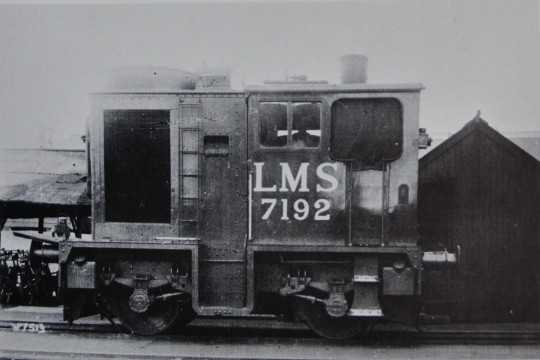



LMS Sentinel No.7192
#LMS#Sentinel Wagon Works#Sentinel No.7192#Shunter#Steam Locomotive#Locomotive#Train#Steam Train#Pulp#Dieselpunk#Weird War
314 notes
·
View notes
Text
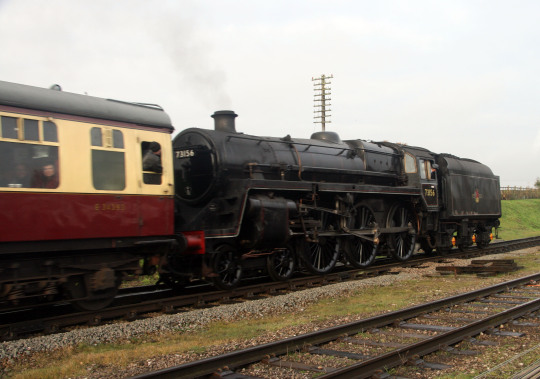
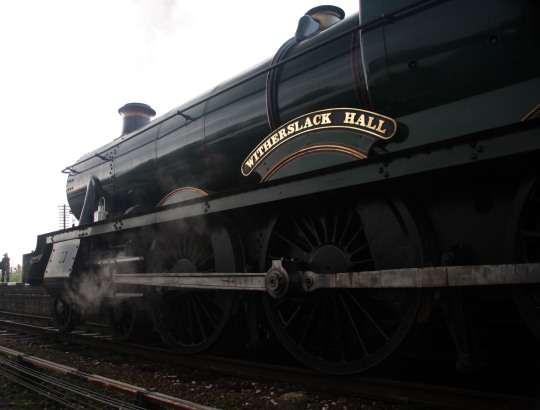







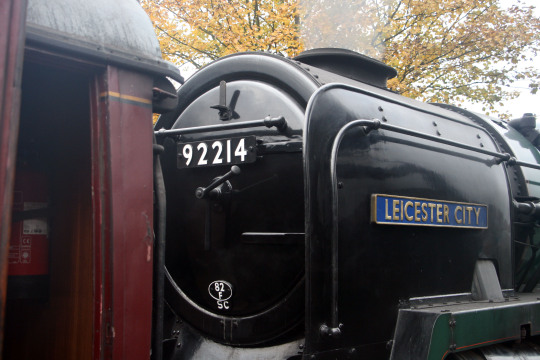
Great Central Railway, Last Hurrah Gala 2019 (Part 1)
#steam locomotive#england#winter#photography#steam engine#steam train#train#engine#locomotive#Great central railway#GCR#LMS#LNER#british railways#smoke#steam#photograph
86 notes
·
View notes
Text

I was so in love with him when i was 7,,, still am
#digital art#art#original art#sketch#artists on tumblr#danonation#paul dano art#paul dano fanart#paul dano#paul dano riddler#dwayne little miss sunshine#dwayne hoover#dwayne x reader#dwayne art#dwayne lms#dwayne hoover lms#dwayne hoover art#little miss sunshine#lms#olive hoover#sketchbook#sketch page#sketch study#study#vinylsketchdoodle
1K notes
·
View notes
Text
How Did the Big 4 Affect Ideas About Scrap for the Steam Engines:
Alright, so in the Railway Series, we know that scrap and the idea of scrap is horrifying to the engines. But the real question is: was this a universal thing? Were all the engines equally horrified, or were there differences.
I mean, from that one infamous illustration in the Railway Series, it seems pretty universal...

But I think that if we dive a little deeper, there may be a few other factors at play, which collectively create very different views on scrap - and they all have to do with the Big 4. I'm going to explain them by size, so let's start giant and get smaller.
LMS:
The LMS engines would not be as surprised to hear they're being replaced and scrapped as other companies. Why? Well, we have to look back a bit. In the 1920's, the LMS was a bit of a hodgepodge of constituent railways and their engines. The Midland 'small-engine' policy did mean that a lot of the bigger engines were frowned upon, but in general the engines were just... there.

This changed with Stanier. When Stanier came along, he began building larger, faster, more powerful engines - and thus a lot of the older, smaller classes were axed. Engines classes like the Black Fives, Coronations and 8F's could do the work of these older engines much better!

There was only one class of engine built by the Furness that survived into BR ownership, and they weren't the only company with this happening. The engines of the LMS would've been accustomed to these ideas. And where does D261 come from? Well, the Class 40 diesels were used on the West Coast Mainline - D261 would be very used to the steam engines being very accepting of the idea that this was 'their time', and therefore stunned at how the Sodor engines acted.
The opposite end of this was that smaller engine classes were very afraid of being withdrawn. Edward's a great example of this - he watched his entire railway be taken over and all his friends and family replaced - and he fears he might be next. It drives him to extreme lengths to prove his worth, just to try and gain a few more years. Donald and Douglas are another example of this; as Caledonian Railway engines, they were generally under the threat of being scrapped all through their careers, and this created a desire to prove themselves and survive.
The LMS as a company committed to this 'purge' of smaller, older classes, and thus the engines of the LMS would have been far more used to and accepting of the idea of being scrapped as compared to others. It was part of the company culture! It wasn't universal by any means, but it had an impact, especially in the English part of the LMS.
LNER:
The exact opposite of the LMS. The LNER was a railway that was throughout its existence very, very poor. And while it did build some stunning-looking express engines...
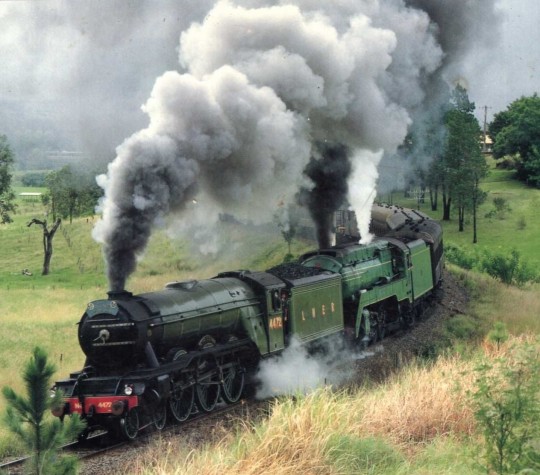
... in actuality, many of the engines running on the LNER were constituent engines that were just kept going. A good example of this would be the C1 Atlantics, which were introduced in 1902, and weren't completely withdrawn until 1950!

The LNER just didn't have the money or the ability to commit to a drastic newbuild scheme like the LMS did. That isn't to say that old engines weren't scrapped, but it did mean a lot more of the older classes weren't. And when a large body of engines survive for 50 odd years, the culture of elongated existence survives with them. Gordon is so badly affected by the Modernisation Plan personally because his company culture was one of preservation and extended service. His brothers would have quite happily told him that even when they were supplanted by the A4's that they'd be around for a long time yet, because that's how the LNER worked. And then they weren't and Gordon was stunned.
And remember, the LNER is the railway that preserved City of Truro alongside a bunch of its elderly engines at York. This railway had a culture that was built around a sort of trickle-down duties. As express engines were supplanted, they simply moved down the chain.
Speaking of City of Truro...
GWR:
This is another railway whose engines are stunned by the Modernisation Plan, but for a very different reason. Both the GWR and the LMS scrapped a large number of engines in the 1930's, but unlike the LMS, the GWR focused on engines who were at the end of their useful lifespan.
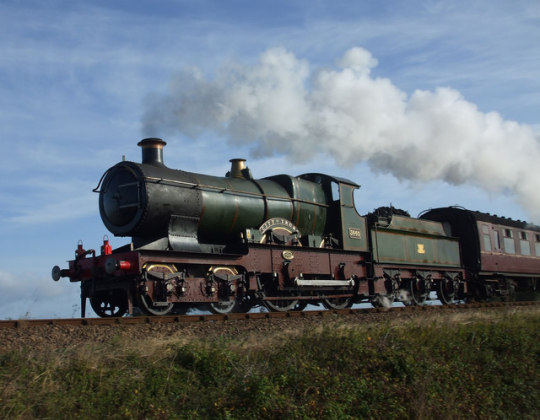
City of Truro was around 30 when withdrawn. For an engine introduced at the same time as the C1 Atlantics, this seems short - but its about average for the GWR at the time. The shock to the GWR engines is not the fact they're being scrapped - it's the fact that engines not at the end of their useful lifespans are being scrapped.
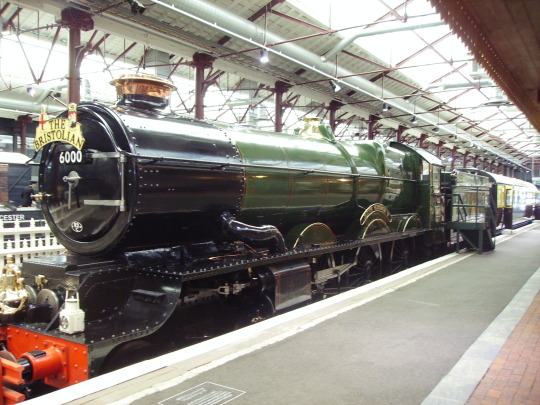
The King class was built in 1927 and nearing the end of their lifespan, but the Modified Halls weren't, and neither were the 9400's. Their withdrawal and subsequent scrapping was what really shocked Western engines.
Oliver's class was built in the 1930's, and would have expected to survive into the late 1960's and 1970's. The sudden withdrawal of them all would have been a great shock, and one of the driving factors behind his escape.
And then in the Railway Series, Duck doesn't act all that surprised to hear steam engines are being cut up - but he is hostile to diesel engines. The reason? Because diesel engines aren't just replacing the old engines in the natural GWR order of things, but supplanting the entire lot. He's relatively fine with Bear though because unlike many of the other diesels, Bear's class could be very easily perceived as being a natural progression of GWR engines. They took over the jobs of Castles and Kings - engines built in the 1920's and nearing the end of their GWR lives. There is of course also his outburst, which gives off a very GWR vibe - telling an engine off for insulting another railway? I wonder which of our Famous Eight has also done that...
Southern:
Right, so the Southern is possibly the most interesting case of them all. And the reason for that is this:
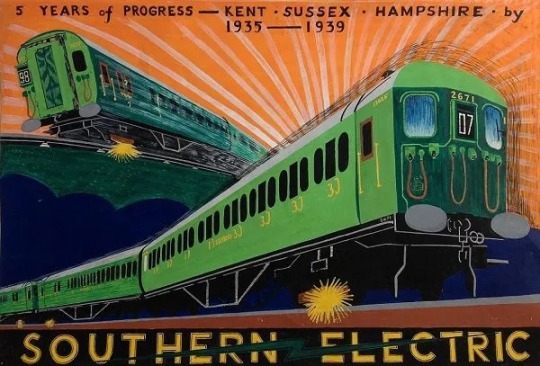
The Southern Railway was both the smallest of the Big 4 and the most passenger orientated. As such, they naturally gravitated towards a program of electrification, which they saw as the best way to maximise their profits. Engines on the Southern would have been invariably told that they would be withdrawn someday when the electrification reached their part of the line. That is a level of certainty that would have a massive impact on how the engines viewed their fate.
It also meant that the Southern Railway was not focused on replacing the steam engines they already had with new ones. This allowed some truly ancient engines to make it to British Railways.

This is Fenchurch, and when withdrawn in 1963 he was the oldest engine working on British Rail. He was built in 1872 - so that's a career of 91 years. And another class that was hitting pensioner years in British Rail was the Adams Radial Class, built in 1882. Both Southern Railway engines that found a niche duty that wasn't going to be electrified or upgraded anytime soon.
Even the E2's had their own niche at Southampton docks! They were a failure of a class when built, and yet were still in service in the 1960's. Thomas the tank engine himself has remarkably little to say about modernisation in the books - his job is threatened by a diesel, and while he's horrified that it's a diesel, he's not shocked he's being replaced. Even though he spent a tiny amount of time in the south, its culture managed to penetrate his smokebox.
But there is one other railway that has a central role in this, and it is of course British Railways.
British Railways:
Right, so this is the one company that is the cause of much of the above commentary to become obsolete. When amalgamated, British Rail was meant to electrify the country's railways slowly and steadily, with steam engines making up the difference. And at the onset, they withdrew and scrapped many of the older, smaller classes of engines and replaced them with the Standards - something very similar to LMS and GWR practice, and also not unfamiliar to the LNER. The really problem comes with the Modernisation Plan in 1955.
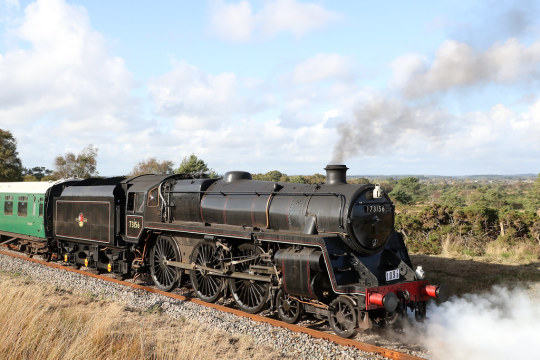
The Standard Five class were built until 1957 - two years after the publication of the Modernisation Plan which explicitly stated that BR would scrap all steam. The 9F's were being built until 1960. At the longest, these engines got less than twenty years. At the youngest, some were withdrawn after only five years.
And that's what shocked all the older engines. It's not the fact they're being scrapped - ever since the conception of the railways, engines have been being scrapped. It's the magnitude of the scrapping and the wanton destruction of young, healthy engines. It's not that they're being replaced - that was always going to happen, all the engines knew that. It's the speed of the Modernisation Plan, the scrapping of brand new engines and the fact that steam engines were replaced with Pilot scheme diesels who were mostly failures.
That's what caused the engines to fear scrap and hate diesels.
And while I would love to delve into the diesels and what happened to them, that's its own massive thing.
I would like to note that this does not really take into account specific incidents, but rather general trends that would have led to more widespread knowledge. The single incident involving one engine in Aberdeen doesn't really permeate railway gossip and ideology, but an entire class being withdrawn does.
I would also like to acknowledge the fact none of the above pictures are mine.
#ttte edward#ttte gordon#ttte donald#ttte douglas#ttte oliver#ttte duck#lner#LMS#gwr#southern railway#british rail#long reads#weirdo shit#I thought I'd share this brainfart#thomas the tank engine#railway series#railways#britain
148 notes
·
View notes
Text
It’s funny when people try to help me, I always get worse. So much for your savior complex, fuckwad. Thanks for shit, really.
#cvtaddict#cvtt!ng#i wanna cvt#sh cvt#baby cvts#cvtting addict#i want to cvt#tw depressing stuff#tw s3lf harm#tw depressing thoughts#lms#i hate living like this#i hate life#i hate it here#i hate this#i hate everything#cvtblr#healing cvts#cvtter#ready to kms#might kms#i wanna kms#i hate it so much
26 notes
·
View notes
Text
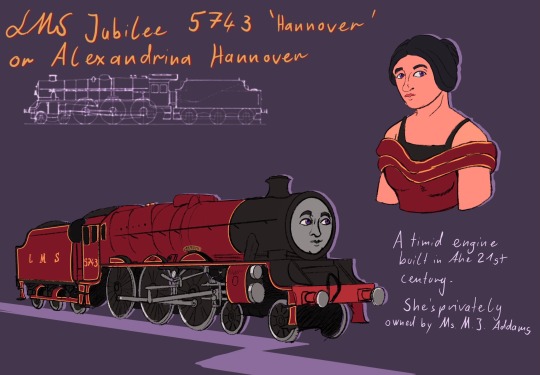
LMS Jubilee 5743 ‘Hannover’ or Alexandrina
A little OC that is a newly built Jubilee. She’s a timid engine but also kind, caring and brave. Ms. M. J. Addams smothers her with affection.
Henry and Scotsman fight over who should be the father figure for her. In her human form she’s short 5’2 to 5’3.
#ttte#thomas and friends#ttte oc#lms#lms jubilee#rws#railway series#I offer you a little baby#she’s so cute and i love her#engine OC#steam engine#a little red stanier baby#concept art#original character#character design#gently holds her baby
29 notes
·
View notes
Text






Like Melting Sugar
"..no you're the cute one"
#ina#illustration#illustrator#lms#like melting sugar#tiktok#frankenstein#frankenstein monster#frankenstiensmonster#elizabeth#adam#adam frankenstein#shy guy#shy#flower crown#comic#comics#webcomic#webtoon#isekai#crush#romance#love
51 notes
·
View notes



